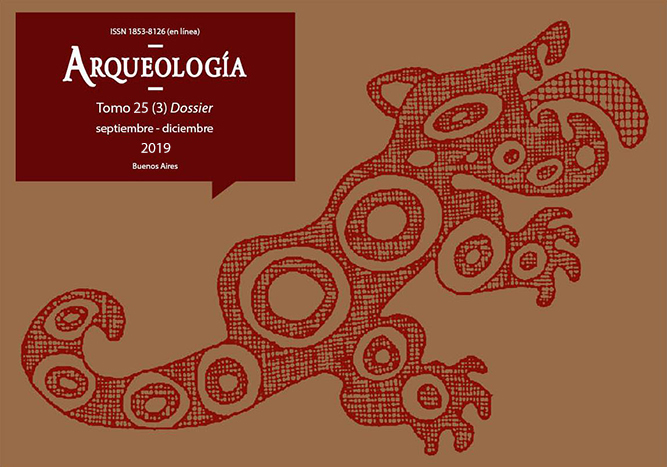Sex determination in human burials from Los Tres Cerros 1 site (Upper Delta of the Paraná River, Entre Ríos) using quantitative methods
Keywords:
Discriminant functions, Secondary burials, Long bones, Sex determination, Upper Delta of the Paraná River, Late Holocene
Abstract
In this contribution, we present the results of the application of discriminant functions to study long bones of human burials from the Los Tres Cerros 1 site (Upper Delta of the Paraná River, Entre Ríos). The collection is characterized by a large number of individuals of undetermined sex, due to the absence of diagnostic skeletal parts such as the pelvis and skull, which probably responds to the high number of secondary burials, and isolated skeletal remains. Therefore, we used this quantitative methodology to estimate the sex composition of this bioarchaeological collection.The discriminant functions used correspond to those considered by other researchers to analyze long bones from sites in the Lower Delta of the Paraná River. We analyzed 37 long bones, which correspond to a minimum number of 17 individuals. First, nine individuals with sex-diagnostic elements were included in the analysis to evaluate the prediction ability of the functions. Subsequently, discriminant functions were applied to eight individuals of undetermined sex. Results allowed us to specify the sexual composition of the burials of the site and showed a sexual differentiation in the burial modalities, and a higher representation of male burials.Downloads
Download data is not yet available.
Published
2019-10-01
How to Cite
Ramos van Raap, M. A., Di Lorenzo, B., Scabuzzo, C., & Batalla, Y. (2019). Sex determination in human burials from Los Tres Cerros 1 site (Upper Delta of the Paraná River, Entre Ríos) using quantitative methods. Arqueología, 25(3), 167-182. https://doi.org/10.34096/arqueologia.t25.n3.7328
Section
Articles
Copyright (c) 2019 Arqueología

This work is licensed under a Creative Commons Attribution-NonCommercial-ShareAlike 4.0 International License.
Authors who publish in this journal agree to the following conditions:
- Authors retain copyright and yield to the journal right of first publication with the work registered with attribution license Creative Commons, which allows third parties to use the published always mentioning the authorship of the work and first publication in this magazine.
- Authors can make other independent and additional contractual arrangements for the non-exclusive distribution of the version of the article published in this issue (p. Eg., Inclusion in an institutional repository or publish it in a book), provided that clearly indicate that the work was published for the first time in this magazine.
- It allows and encourages the author / s to publish their work online (eg institutional or personal pages) before and during the process of revision and publication, as it can lead to productive exchanges and greater and more rapid dissemination of work published (See The Effect of Open Access).





(1)13.png)






1.jpg)
1.jpg)


13.png)
1.png)


(1)1.png)









